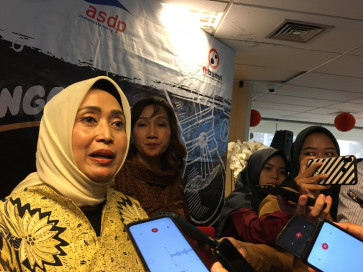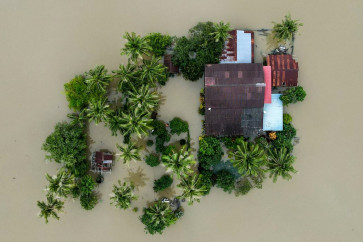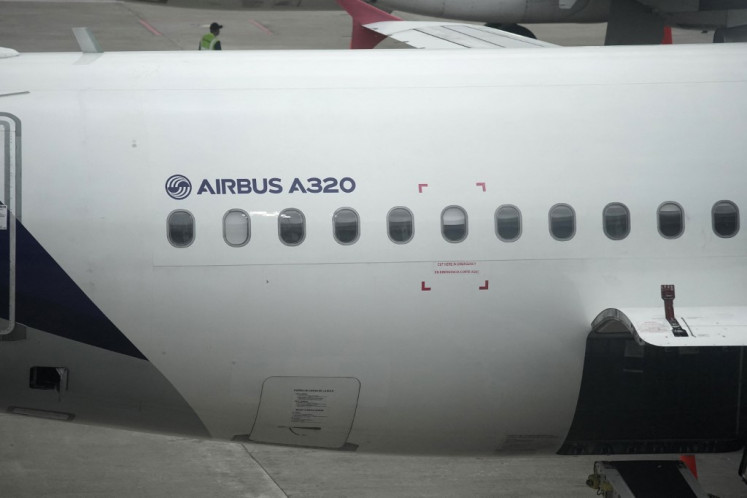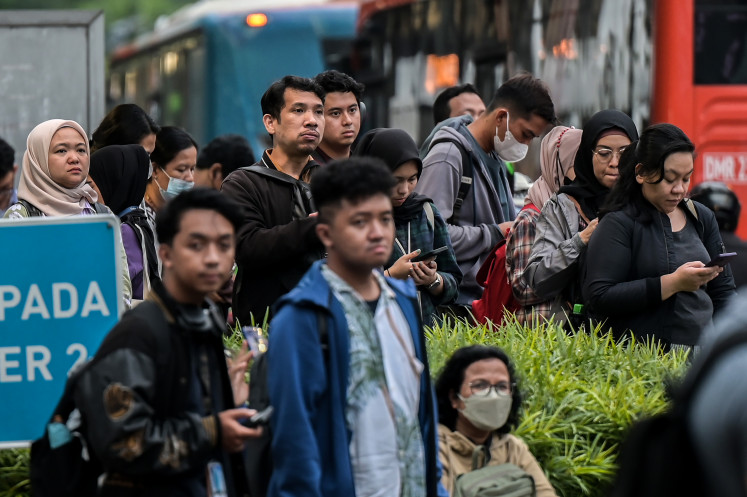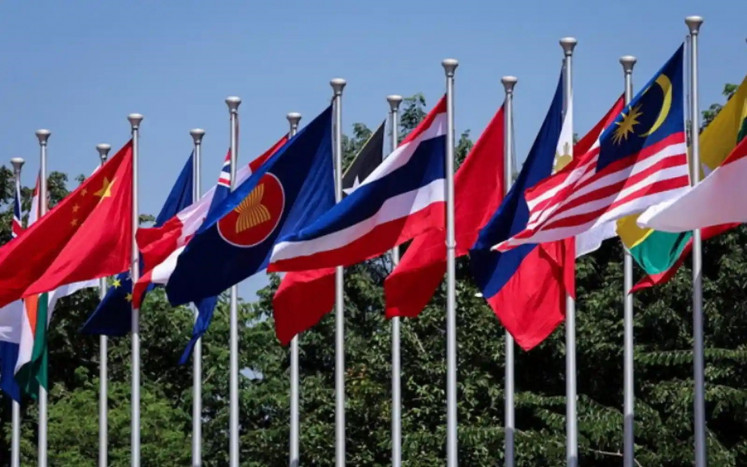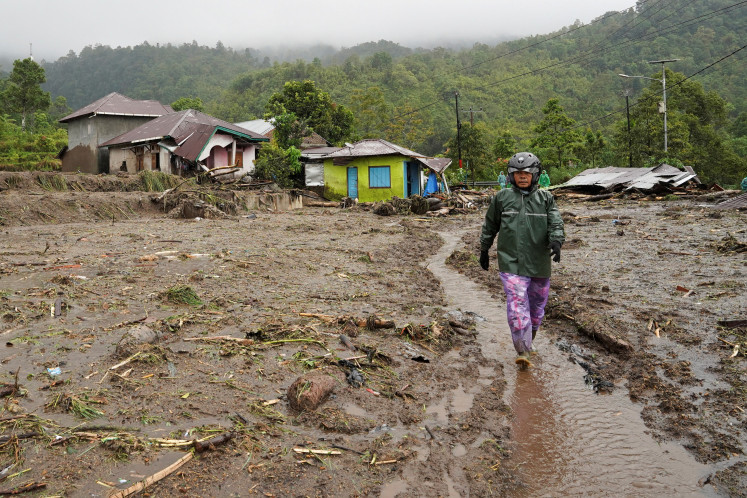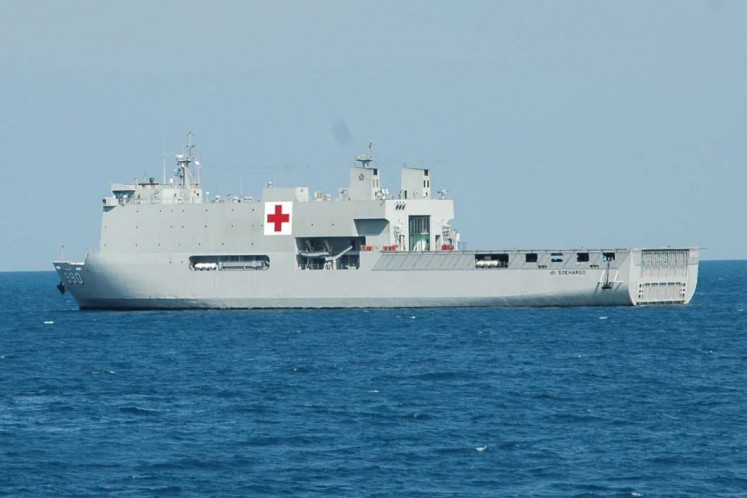Popular Reads
Top Results
Can't find what you're looking for?
View all search resultsPopular Reads
Top Results
Can't find what you're looking for?
View all search resultsBuffering the shock: IEU-CEPA for resilient trade
The landmark Indonesia-EU CEPA signals potential benefits for both sides and particularly wider and more certain market access for Indonesia.
Change text size
Gift Premium Articles
to Anyone
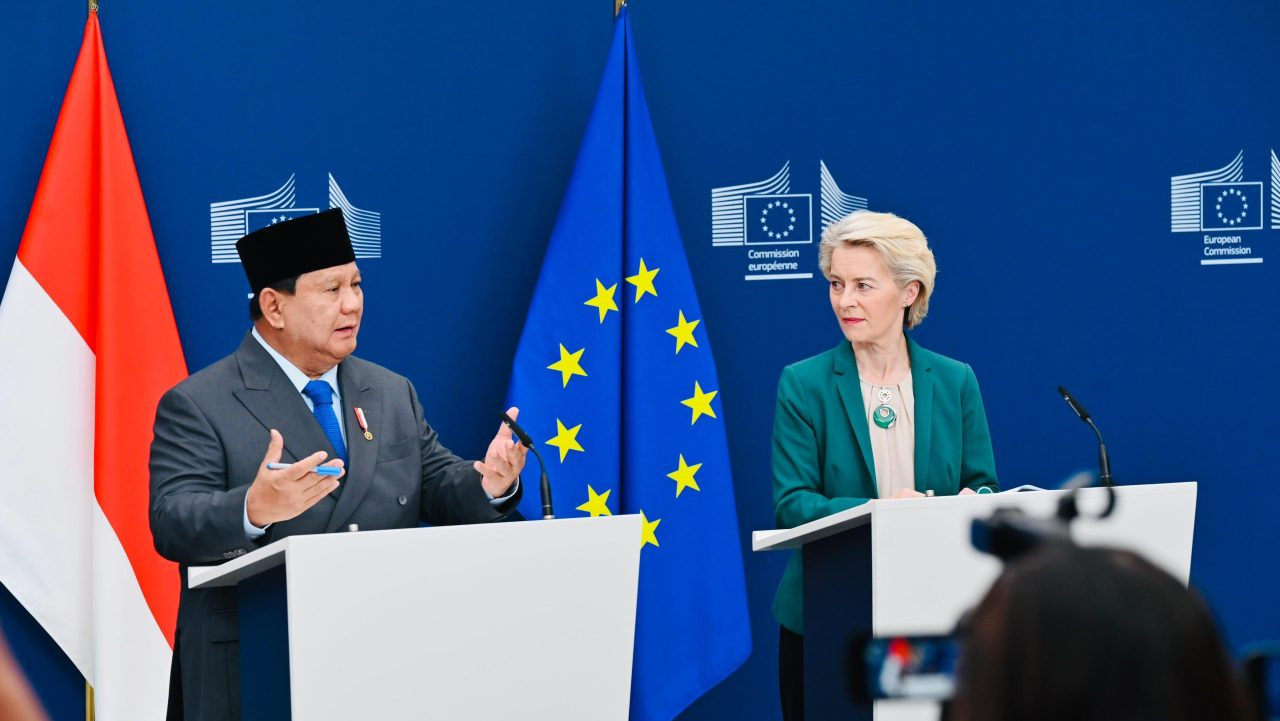 President Prabowo Subianto (left) and European Commission President Ursula von der Leyen (right) address a press conference in Brussels on July 14, 2025, to announce that a political agreement had been reached on the Indonesia-European Union Comprehensive Partnership Agreement (IEU-CEPA). (Presidential Secretariat Press Bureau/Laily Rachev)
President Prabowo Subianto (left) and European Commission President Ursula von der Leyen (right) address a press conference in Brussels on July 14, 2025, to announce that a political agreement had been reached on the Indonesia-European Union Comprehensive Partnership Agreement (IEU-CEPA). (Presidential Secretariat Press Bureau/Laily Rachev)
I
ndonesia and the European Union agreed to the Indonesia-European Union Comprehensive Economic Partnership Agreement (IEU-CEPA) on Sept. 23 in Bali after roughly nine years of negotiations. The two parties will eliminate import duties on more than 90 percent of tariff lines, which includes a phased five-year reduction of Indonesia’s current 50 percent import tariff on EU-origin automobiles.
Both Indonesia and the EU view their CEPA as a boost to exports and investment that is expected to help offset the impact of the tariff policies of United States President Donald Trump
Although the agreement should have positive effects on Indonesian export commodities, particularly crude palm oil (CPO) and textiles, and make EU-origin imports more affordable, important challenges remain for the Indonesian government to address. These comprise ensuring standardized product quality and robust sustainability practices, improving monitoring and enforcement and protecting local manufacturing capacity during the transition.
The US tariff measures on most countries have disrupted global trade, including the 19 percent “reciprocal” tariff imposed on Indonesia. The United States is Indonesia’s second-largest export market with a total trade value of US$26.5 billion in 2024, accounting for around 10 percent of Indonesia’s global exports.
The IEU-CEPA now serves as a key offset to this tariff shock.
Before the agreement, average EU import tariffs on Indonesian products varied widely: from 3 to 17 percent for textiles with an average of 12 percent; 0.0-5.7 percent for furniture with an average of 2.5 percent; 0.0-6.5 percent for rubber with an average of 2.5 percent; 0.0-23.0 percent for fisheries with an average of 10 percent; while tariffs on CPO ranged from zero percent to 16.0 percent with an average of 6.0 percent.
Despite these tariffs, the EU market still contributed around 6.6 percent of Indonesia’s total exports with a trade value of $17.3 billion.
Under the IEU-CEPA, these tariffs are expected to fall to zero percent across the board, making Indonesian products significantly more affordable and competitive in the European market. This may pave the way for a shift in export destinations from the US to the EU.
However, even with full tariff elimination, Indonesia’s access to the EU market will still face structural challenges from the Carbon Border Adjustment Mechanism (CBAM), which imposes extra costs on products with high carbon emissions, and the EU Deforestation Regulation (EUDR), which restricts goods linked to deforestation and demands proof of sustainable sourcing. These rules will keep raising compliance costs and limit the competitiveness of key exports such as steel, cement, palm oil, rubber and wood products.
Overall, the IEU-CEPA opens wider access for Indonesia’s key commodities to the European market. The products expected to benefit the most include CPO and its derivatives, textiles and garments as well as footwear.
The elimination of tariffs on most Indonesian products, coupled with the reduction of certain nontariff barriers, is expected to enhance price competitiveness and strengthen market access certainty. The government also anticipates an export surge in the early years of implementation, supported by market diversification and increased investment flows following the agreement.
Beyond tariffs, the IEU-CEPA also improves regulatory alignment and investment confidence. It provides greater certainty of access for Indonesia’s critical raw materials, such as nickel, in line with the EU’s supply diversification agenda under the Critical Raw Materials Act. Harmonization with European sustainability standards and battery due diligence requirements will further support long-term supply contracts for mixed hydroxide precipitate (MHP), nickel matte and nickel sulfate, creating opportunities for sustained growth in EV-related exports from Indonesia to the EU.
On the import side, the IEU-CEPA also brings several advantages for Indonesia.
The agreement lowers tariffs on machinery and equipment, chemicals and pharmaceuticals, automobiles and parts, as well as selected agrifood products. These reductions are expected to lower production costs, accelerate industrial modernization and expand consumer choice.
For EU-origin cars, the gradual tariff cuts will reduce landed costs and retail prices, supporting growth in the premium and EV segments while opening opportunities for local assembly of completely knocked down (CKD) cars once market scale is achieved.
According to the European Commission, EU exporters are projected to save around 600 million euros ($695 million) per year from the elimination of duties. At the same time, Indonesian consumers and businesses will benefit from lower prices on industrial inputs and a broader range of high-quality products. The phased reduction of tariffs on EU automobiles from 50 to zero percent is likely to further lower retail prices, potentially shifting demand toward premium and EV models and intensifying market competition.
While customs duty revenues might decline as a result, part of the loss could be offset by higher value-added tax (VAT) and luxury tax receipts due to rising sales volumes.
We see IEU-CEPA as a strong tailwind for Indonesia’s exports through expanded market access and tariff reductions toward 0 percent, some immediately, others phased.
This agreement helps reduce Indonesia’s long-standing reliance on the US market, especially for textiles and garments.
However, fully utilizing it requires: (1) government action to ensure standardized product quality and robust sustainability practices, addressing current gaps so Indonesian products consistently meet the EU’s highest benchmarks; (2) monitoring, traceability and enforcement toward more sustainable practices, particularly for products covered by the CBAM and EUDR, since commodities like CPO, coffee, cacao, steel and wood remain subject to these rules despite free trade agreement (FTA) benefits and must comply to avoid new nontariff obstacles; (3) strategy to compete with other Southeast Asian exporters such as Thailand, Vietnam and Malaysia as the EU moves to finalize their FTAs, which will intensify competition across many of the same commodities; and (4) proactive marketing of Indonesia’s unique products that the EU market is seeking, with the government identifying specific demand niches and using the IEU-CEPA’s timing to negotiate product-level arrangements that can lift overall exports.
*****
The writer is an industry and regional analyst at Bank Mandiri.



